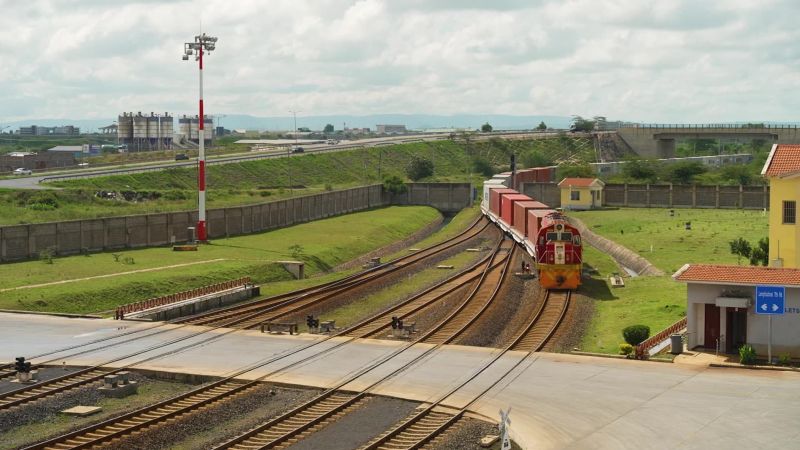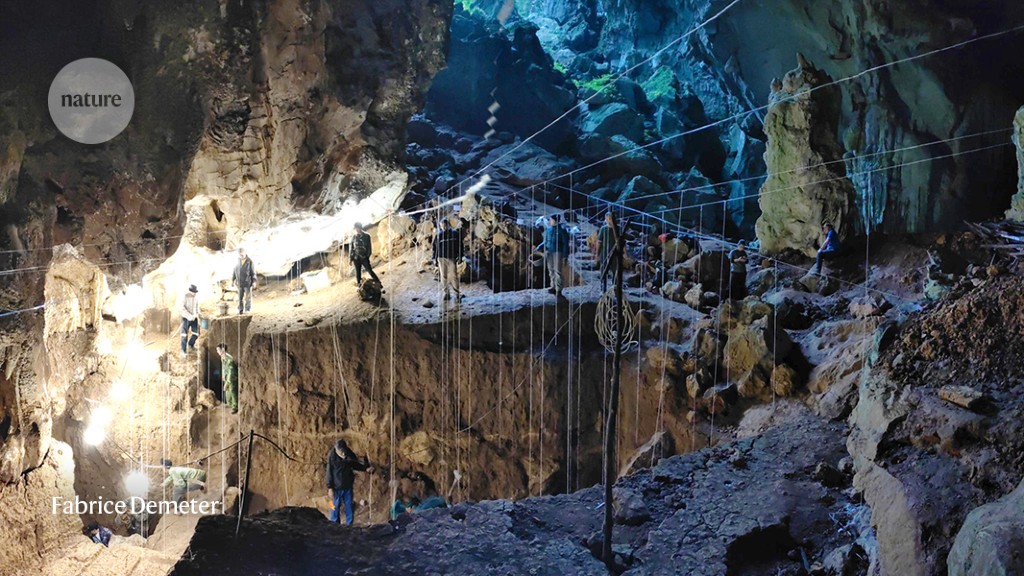Archaeologists have uncovered two new bone fragments in a cave in northern Laos, suggesting that Homo sapiens wandered southeast Asia up to 86,000 years ago. The findings, published this week in Nature Communications1, indicate that humans migrated through the area earlier than previously thought.
Over more than a decade, excavations in the Tam Pà Ling cave have uncovered seven bone fragments sandwiched between layers of clay. Laura Shackelford, an anthropologist at the University of Illinois Urbana–Champaign, and her colleagues have regularly had to hike through sticky tropical heat to reach the mountain-top cave.
After digging 18 metres down, excavations have finally hit bedrock, and the team has been able to reconstruct a complete chronology of the cave, says Shackelford. Sediment and bones unearthed in the cave show that modern humans have inhabited the mountainous region for at least 68,000 years, and passed through even earlier.
“I can’t overestimate the importance of having another point on our map for early modern humans in southeast Asia,” says Miriam Stark, an anthropological archaeologist at the University of Hawaii at Manoa who was not involved in the work. “Understanding southeast Asia is critical to understanding the world’s deep history,” she says.
Old bones
The newly discovered bones are a small piece of skull and a shin bone fragment. The remains were probably swept into the uninhabited cave during a flood. The researchers dated herbivore teeth found alongside the human fossils using electron spin resonance and uranium-series dating. They also estimated the age of the cave sediment using luminescence dating, which calculates when photons last illuminated the soil. Together, the results put the ages of the skull fragment and shin bone at around 70,000 and 77,000 years old, respectively. But the shin bone could be as old as 86,000 years. That’s much older than the first fossil unearthed at the site more than a decade ago, a chunk of a skull estimated to be 46,000 years old2. It’s also older than other cave bones — two jaw fragments, a rib and a foot bone — that are between 46,000 and 70,000 years old3–5.
Fossil records in southeast Asia are limited, in part because the tropical climate decomposes most bones. The details of when early humans first arrived in the region, where they came from and where they migrated to is still a matter of debate, Shackelford says. Laos lies on a potential migration route to Australia, where the oldest archaeological site is around 65,000 years old6. In addition to contributing data to an understudied area, Tam Pà Ling provides further insights into the timing of migration through the region.
Some human migration hypotheses use DNA analysis to argue that H. sapiens dispersed in a single rapid event after a geological period, called Marine Isotope Stage 5, which lasted from 130,000 to 80,000 years ago. But the Tam Pà Ling fossils don’t align with these models. Instead, the fossils suggest dispersal occurred before Marine Isotope Stage 5 had concluded.
“We’re seeing something different,” Stark says. That doesn’t mean that the genetic models are incorrect, she says, just that the picture they reveal is incomplete.
The shape of the Tam Pà Ling fossils further complicates the story. Although they are from H. sapiens, the youngest bone — the 46,000-year-old skull fragment — has a mixture of characteristics of both archaic and modern humans, whereas the oldest fossils have more-modern features. For example, the older skull fragment lacks the pronounced brow bone associated with more-archaic humans that is observed to some degree in the younger fossil.
That is counter-intuitive, Shackelford says, and suggests the older fossils might not have evolved from local populations, but rather represent groups of early modern humans that migrated through the area. Armand Mijares, an archaeologist at the University of the Philippines Diliman in Quezon City, says that this is a plausible interpretation, but that more evidence is needed to be certain.
Shackelford and her colleagues will continue excavations in the cave to look for more fossils. They are also trying to recover environmental DNA from the clay, which could provide clues about what flora and fauna were living in the surrounding area tens of thousands of years ago. Discoveries beyond the cave could also yield valuable insights into the early human inhabitants of the region.
“This is just one mountain,” says Shackelford. “There are thousands of caves to explore.”







More News
Editorial Expression of Concern: Leptin stimulates fatty-acid oxidation by activating AMP-activated protein kinase – Nature
Quantum control of a cat qubit with bit-flip times exceeding ten seconds – Nature
Venus water loss is dominated by HCO+ dissociative recombination – Nature